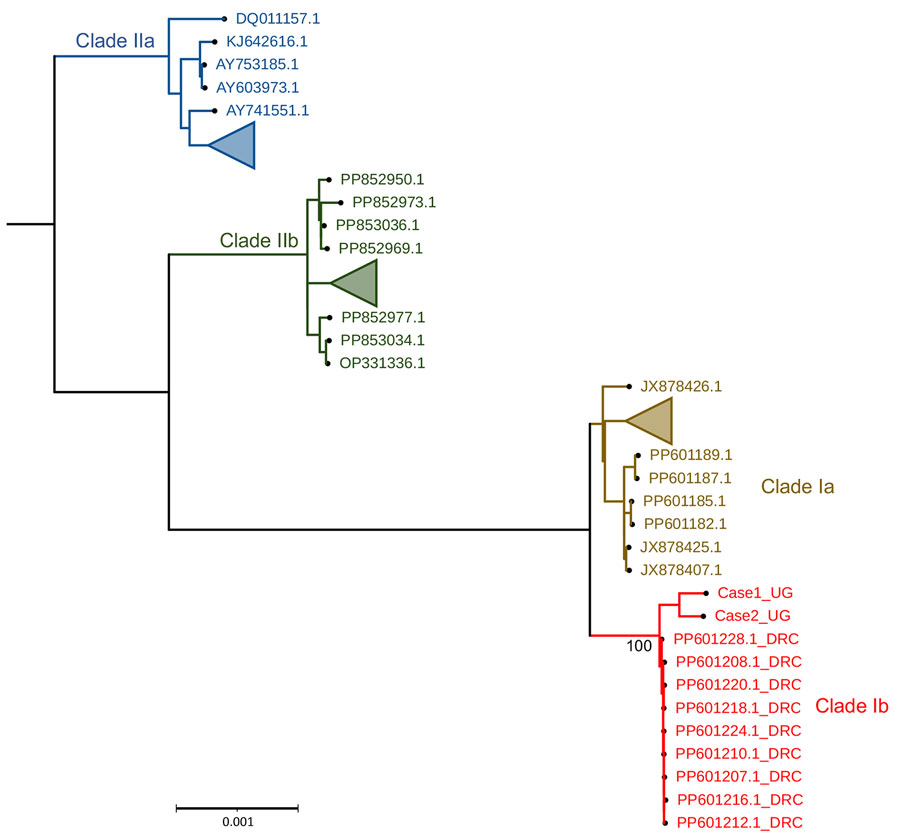Volume 31, Number 1—January 2025
Dispatch
Case Reports of Human Monkeypox Virus Infections, Uganda, 2024
Figure 2

Figure 2. Phylogenetic tree showing clade analysis in study of human monkeypox virus infection, Uganda, 2024. Maximum-likelihood tree was generated using IQ-TREE (https://www.iqtree.org) with 1,000 bootstrap resampling. The monkeypox virus sequences from Uganda (Case1_UG and Case2_UG) clustered with other clade Ib viruses from the Democratic Republic of the Congo (red text). Scale bar indicates number of nucleotide substitutions per site.
Page created: November 11, 2024
Page updated: December 22, 2024
Page reviewed: December 22, 2024
The conclusions, findings, and opinions expressed by authors contributing to this journal do not necessarily reflect the official position of the U.S. Department of Health and Human Services, the Public Health Service, the Centers for Disease Control and Prevention, or the authors' affiliated institutions. Use of trade names is for identification only and does not imply endorsement by any of the groups named above.